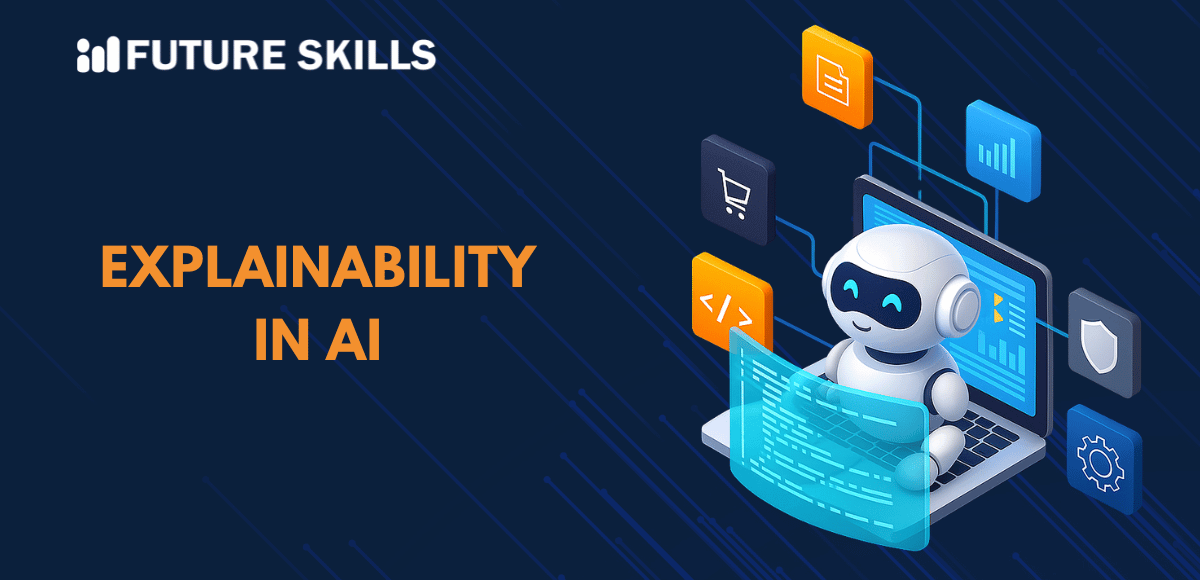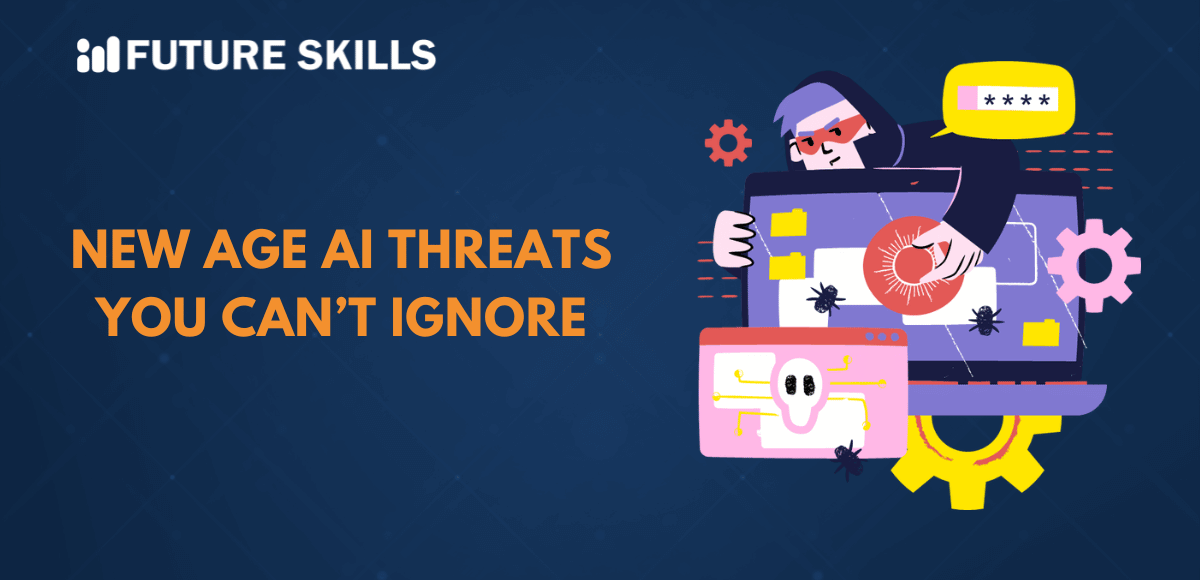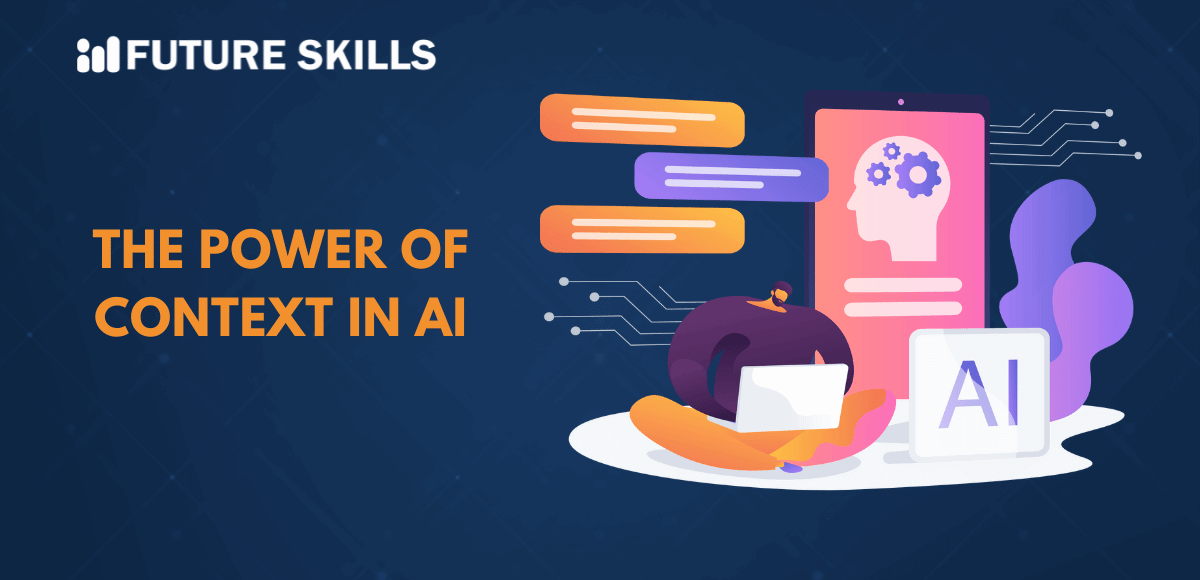Artificial intelligence has induced revolutionary transformation in the domain of technology with AI tools gaining popularity for their use cases. You might expect that artificial intelligence is more capable of understanding and processing data better than us. However, there is no way to completely trust AI models and their outputs. The primary goal of explainability in AI is to figure out how AI models make specific decisions. As AI becomes an integral contributor in critical areas such as finance and healthcare with the use of complex models, it is important to find out why a model comes up with a specific prediction. Let us learn more about the important concepts of explainability and popular techniques for the same, such as SHAP and LIME.
Level up your AI skills and embark on a journey to build a successful career in AI with our Certified AI Professional (CAIP)™ program.
Problem of the AI Black Box
Think of a scenario in which a healthcare provider uses an AI application to verify insurance claims. Let us assume that the AI app rejects the insurance claim of a patient in a critical condition. At such a point of time, the patient will need reasons for which their insurance claim was rejected. Without any explanation from the AI model, you will never know why it took such a decision. Such scenarios serve as example of why AI adoption may decline due to the lack of trust, accountability and fairness.
The first thing you will find in answers to “What is explainability in AI?” is the black box problem. Powerful AI models, such as deep learning models, have a complex architecture. While you may know the data they are learning from, the internal mechanism of AI models is in the dark. The goal of explainability is to solve the black box problem. Here are some reasons why solving this problem is necessary for the future of AI.
- Users will trust AI systems that offer explanation about how they work and take their decisions, which will directly result in increased adoption.
- Explainability is an ethical requirement in highly regulated industries for ensuring accountability.
- Developers can identify the root cause when an AI model makes a wrong prediction and debug it to improve performance.
- The most prominent reason to solve the black box problem is to uncover biases in training data or learning processes of AI models to ensure fairness.
Understanding the Role of Interpretability
The discussion about solving the black box problem can find a solution in the term ‘interpretability’. The explainable AI interpretability connection is evident in the fact that interpretability represents the degree to which humans can understand the decision-making process of AI models. One of the examples of highly interpretable AI models is a simple decision tree with few rules. Anyone can follow the path of a decision in the model and understand how the model took a specific decision.
The complex neural networks used in deep learning are the ideal examples of less interpretable models. It is difficult to find out how a specific input led to an output amidst millions of parameters. Explainable AI aims to make the less interpretable models easier to understand by providing details about their internal working. Another approach to improve interpretability is through assessment of a model with respect to models with higher interpretability.
Level up your ChatGPT skills and kickstart your journey towards superhuman capabilities with Free ChatGPT and AI Fundamental Course.
Powerful Tools for Explainable AI
The overview of the problem suggests that explainable AI needs powerful tools. SHAP and LIME are the two most popular techniques to improve explainability of AI models. The following sections will help you understand the two techniques and how they solve the black box problem.
SHAP
SHAP is one of the commonly used explainability framework that uses game theory as its foundation. The framework capitalizes on the concept of Shapley values, thereby earning its name, Shapley Additive Explanations. The SHAP framework involves an example of a team of players working together to achieve a specific outcome.
Shapley values suggest that the outcome or the payout should be distributed between the players, depending on their contribution to the game. In the context of AI, SHAP evaluates the contribution of every feature to a specific outcome by considering all possible combinations of features. The following benefits of SHAP indicate why it is a major contributor to the rise of explainable AI.
- SHAP framework is one of the best explainable AI techniques that you can apply to any machine learning model.
- The Shapley values ensure fair credits for contributions of features to the outcome and quantify the impact of each feature.
- The SHAP framework can also explain individual predictions and the overall behavior of the model by combining the Shapley values for multiple predictions.
- SHAP also offers different types of plots, such as force plots, dependency plots and summary plots to create accurate visualization of explanations.
LIME
The next popular tool for explainable AI is the LIME or Local Interpretable Model-Agnostic Explanations framework. It follows a different approach by explaining individual predictions, thereby ensuring local interpretability. The LIME framework works by creating a simple, interpretable model around the prediction itself.
The working mechanism of LIME framework starts with creation of slightly modified versions of the input data for a specific prediction. In the next step, LIME feeds the modified data points into the original model to observe its predictions. Subsequently, the framework involves training a simpler and more explainable AI model on the modified data points and corresponding predictions. The simpler model follows the black box model behavior for the input and its coefficients help in explaining the original prediction.
LIME also stands out as one of the powerful explainable AI tools for its benefits. For instance, it is also applicable to all machine learning models like the SHAP framework. The biggest strength of LIME lies in local interpretability or the ability to explain individual predictions. Local interpretability plays a significant role in debugging and obtaining deeper insights in specific cases. On top of it, LIME uses simple, interpretable models, which makes its explanations easier to understand.
Despite its formidable strengths, LIME framework has some limitations such as lack of stability. In some scenarios, small modifications in the input data could lead to completely different explanations. Another limitation of LIME is the trade-off between interpretability and fidelity. The simpler, interpretable model in the LIME framework is only a representation or approximation of the original model. Therefore, you cannot be completely sure about the accuracy of its representation of the complex model’s behavior.
Explore the implications of supervised, unsupervised, and reinforcement learning in diverse real-world use cases with Machine Learning Essentials Course
Exploring Other Interpretability Techniques
SHAP and LIME are not the only players in the game to make AI models more explainable. The domain of explainable AI has been expanding with the addition of new and more effective interpretability techniques and frameworks. The following interpretability techniques have been gaining popularity for their unique working mechanisms and advantages.
-
Partial Dependence Plots
The future of explainability in AI will rely a lot on clear and accurate visualization of explanations for a model’s behavior or predictions. Partial Dependence Plots work by showing the marginal effect of one or two features on the prediction of a model. It involves calculating the average of the outcome of all other features, thereby isolating the prediction from the relationship between target features. Partial Dependence Plots are the ideal technique for understanding the average relationship between a model’s output and a feature.
-
Rule-Based Systems
Rule-based AI systems tailored for specific types of problems work by generating their rules or the rationale behind their decision-making process. Such types of systems are ideal for use cases that demand explicit decision logic and transparency.
-
Feature Importance
Most of the simpler models such as tree-based and linear regression models provide an estimate of feature importance. The feature importance helps you determine which features are likely to have the highest impact on the predictions of a model throughout the complete dataset. In the case of linear models, the absolute value of coefficients represents feature importance. Feature importance is a trusted choice for high-level overview of important features for an AI model.
Discover the best techniques for using AI to transform your business with our AI for Business Course. Enroll now!
Final Thoughts
The need for explainable AI has been growing as the ‘black box’ problem continues haunting the reputation of AI systems. How will users trust AI systems when they don’t know how the systems take specific decisions? The use of explainable AI techniques is a proof of the fact that explainability will become an integral aspect of the AI landscape. Explainable AI models command more trust and techniques like SHAP and LIME serve as ideal solutions to enhance explainability. Learn more about explainable AI and its implications for the future of AI right now.






